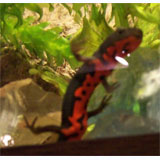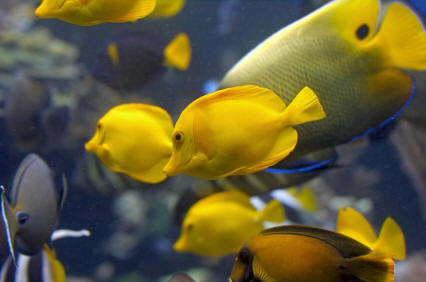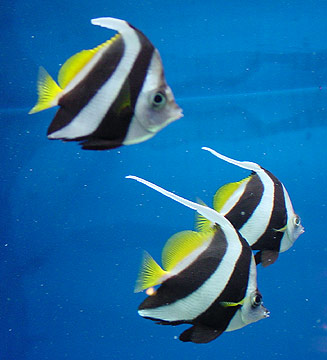Fire Belly Goldfish

|
Scientific Name: Carassius auratus Price: Upon Request Origin: East-central China Family: Melanotaeniidae NOT AVAILABLE NOW |
Technical Info
Temperature: 16 - 20 ℃
pH: 6.5 - 7.5
GH: 6 - 12
Max size: 10 cm
Min Tank size: 75 Ltr
Position in Aqua: Bottom swimmer
Description
Fire Belly Newts are amphibians that are classified as Pleurodelinae- a subfamily Salamandridae. Principally, this means newts are salamanders and spend most of their life under water. Newts can be either black or dark brown with a spotty orange or red underbelly. Thus, the name fire bellied newt is given to them. The life of fire bellied newts commences as an aquatic larva feeding on small life forms. When the fire bellied newt grows into an adult it can either go back under water to live permanently or lives partially on land, depending on their surroundings. As pets they are excellent and donít demand much care but breeding them is not very easy. The following account tells you all about fire belly newts breeding.
Food
Brine shrimp is the ideal food for tadpoles because these small fish swim around the tank attracting attention of tadpoles.
Breeding
To breed fire bellied newts, at least one female and one male are required. It is an easy job to sex adult fire bellied newts. There are special glands in males at the base of their tail near the cloaca. These glands will become swollen when a male fire bellied newt reaches breeding age. It makes it easy to spot. Your newt pets can take many months to become comfortable enough in their new home before they begin breeding. Optimal mating conditions will be ensured if you avoid contact with your newts. This will help in reducing any stress. If mating is successful the female fire bellied newt will become noticeably swollen with eggs. Then she will lay eggs and affix them to the leaves of underwater plants. These eggs resemble clusters of clear balls having a black seed like dot at the center. Carefully place these eggs in a separate tank because when they begin hatching, the adults may gobble them up.
Compatible with
Newts can be kept with other newts of approximately the same size with little trouble; Newts rarely disturb fish. Large newts can eat small fish, like young guppies, but will leave most fish alone. Some fish will eat newts and some won't. My bettas, cory cats, and medium-sized goldfish have lived happily with newts. If you're not sure about a particular fish, try feeding it a fish the approximate size of your smallest newt. If the fish eats it, it will probably also eat the newt.
Note
Hardy and relatively easy to care for, they make a good choice for the beginning amphibian keeper.

